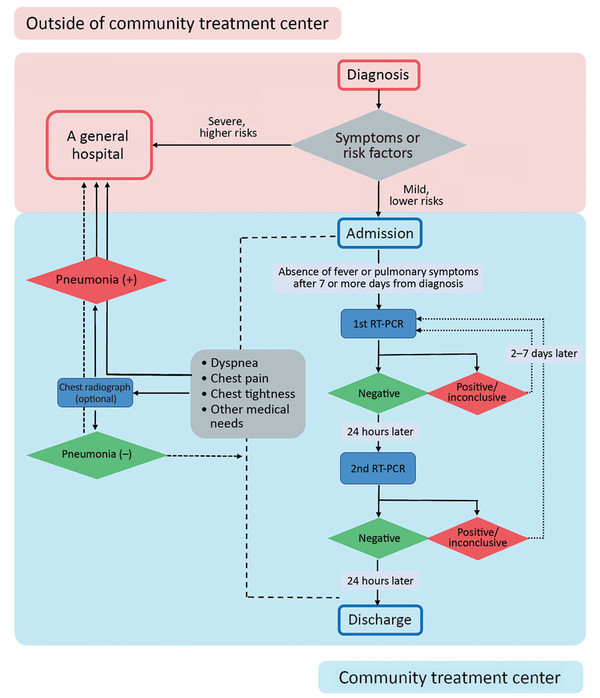A medical journal by the U.S. Centers for Disease Control and Prevention (CDC) published a Korean study that concluded that community treatment centers (CTCs) for patients with mild Covid-19 helped prevent the healthcare system's collapse.
Professor Kim Hyoung-seop of the Physical Medicine and Rehabilitation Department at the National Health Insurance Service (NHIS) Ilsan Hospital said Thursday that his research team published the study results in Emerging Infectious Disease.
The study monitored 568 Covid-19 patients admitted to three CTCs -- in Jecheon, North Chungcheong Province, Gimje in North Jeolla Province, and Gyeongju in North Gyeongsang Province.
NHIS Ilsan Hospital, Hanyang University Hospital, and Korea University Medicine’s medical support team conducted the monitoring and analysis.

In Gyeongju, the CTC opened on March 3, that in Jecheon, March 9, and that in Gimje, March 11.
The research team analyzed clinical data of 568 patients with either no Covid-19 symptoms or mild ones collected by March 23. The CTC in Gyeongju admitted 289, Jechon, 110, and Gimje, 169.
The mean age of patients was 36 years and the mean number of days patients stayed at the CTC was 19.6. In particular, 75.7 percent of patients admitted to CTCs were asymptomatic, and 24.3 percent showed Covid-19 symptoms such as cough and nasal congestion.
Twelve patients were transferred to hospitals. Among them, eight had Covid-19 symptoms worsened, and two had medical problems irrelevant to Covid-19. The rest two were a two-year-old who was too young to be taken care of at a CTC and a pregnant woman. The median number of days from admission to hospital transfer was 2.5 days.
The research team said Korea introduced CTCs to cope with surging Covid-19 patients who required isolation and monitoring but did not need to be hospitalized for treatment.
“Patients admitted to CTCs maintained a stable clinical course, but the time to discharge was long,” the research team said.
According to the study, over 80 percent of the patients were not severe cases and did not require special therapies, such as oxygen supplementation or parenteral fluid infusion.
Thanks to the introduction of CTCs, patients with moderate or severe disease could use hospital beds for treatment, the research team noted.
“We concluded that during a pandemic, CTCs with monitoring on mild cases, appropriate clinical triaging, and treatment could effectively stabilize the healthcare system,” Kim said.”
He called for a standardized protocol for patient care in preparation for a potential second wave of Covid-19.
Since February, NHIS Ilsan Hospital has been supporting physicians who fight against Covid-19. The hospital dispatched doctors and nurses to the CTC in Jecheon in the early stages of CTCs and helped build a standardized CTC model.

